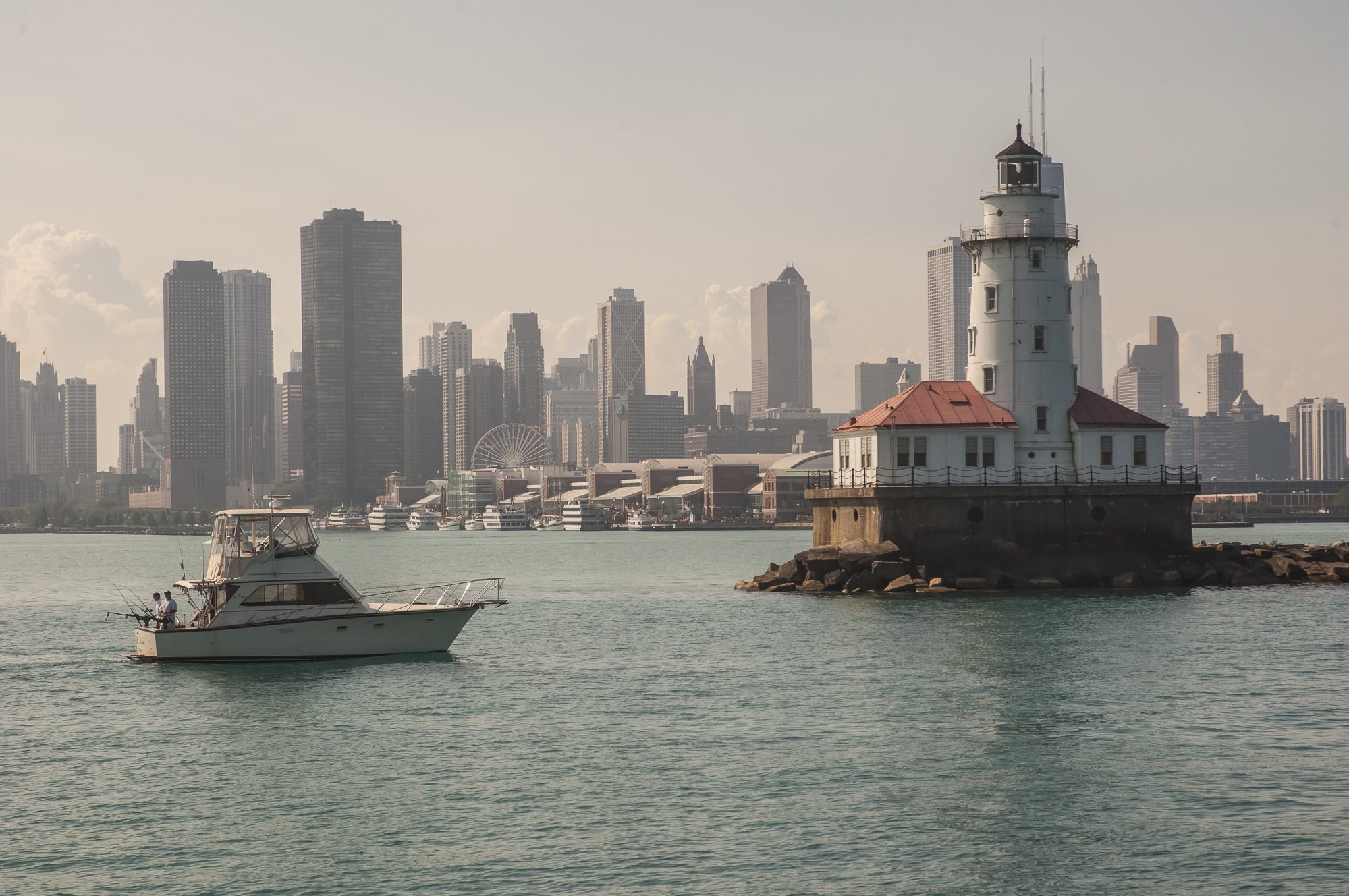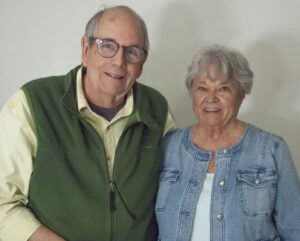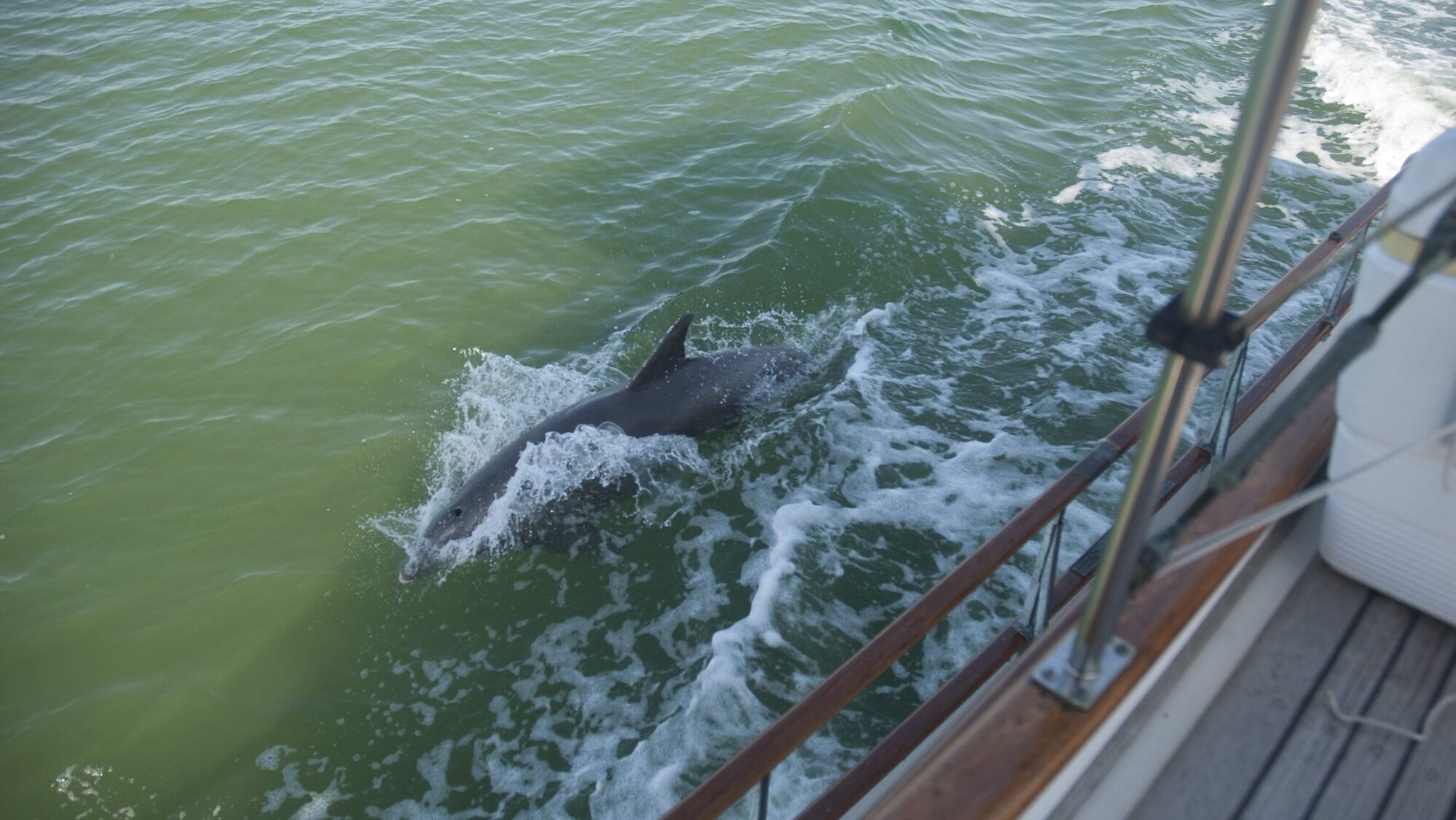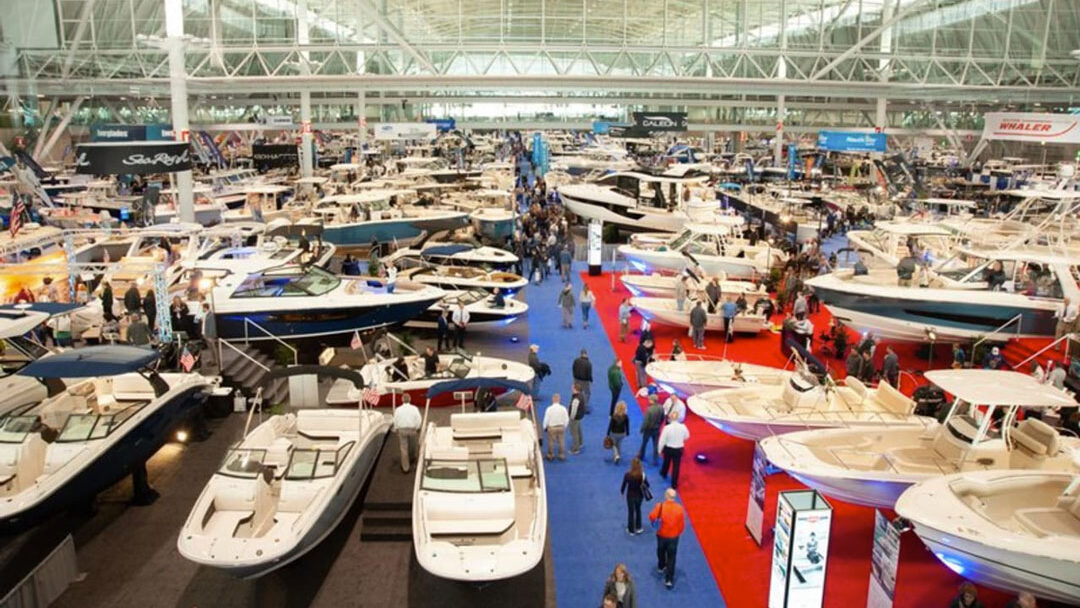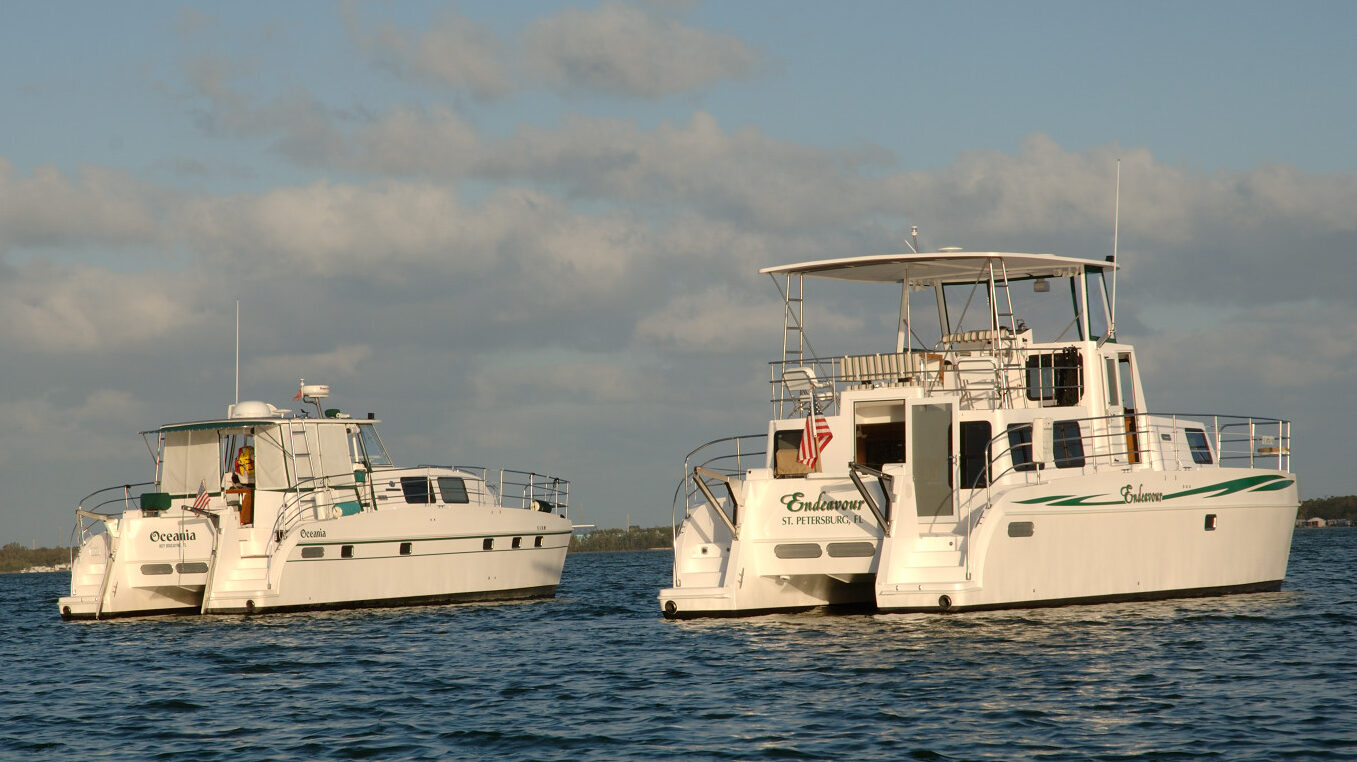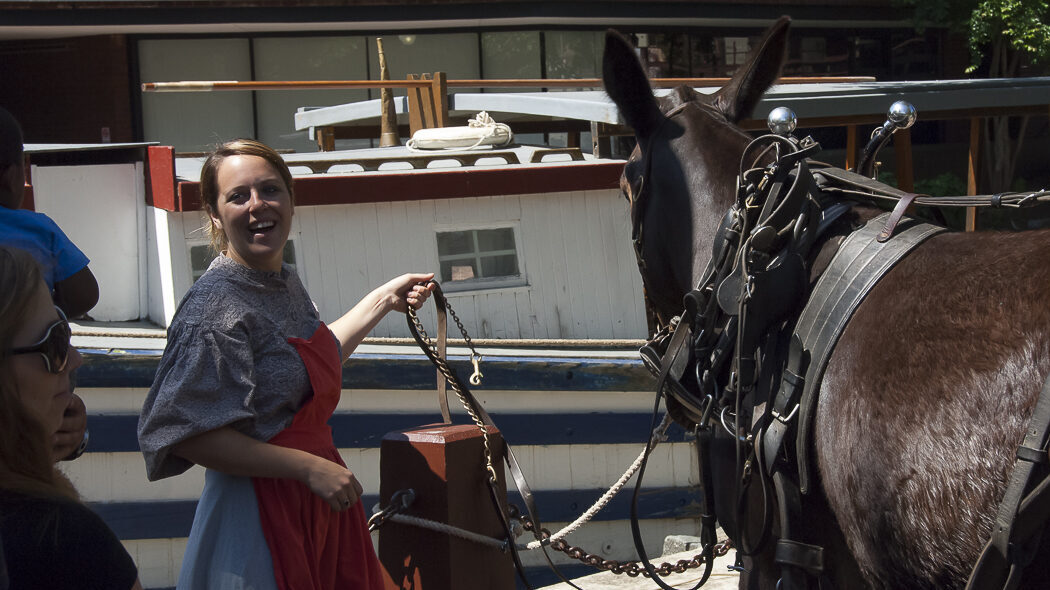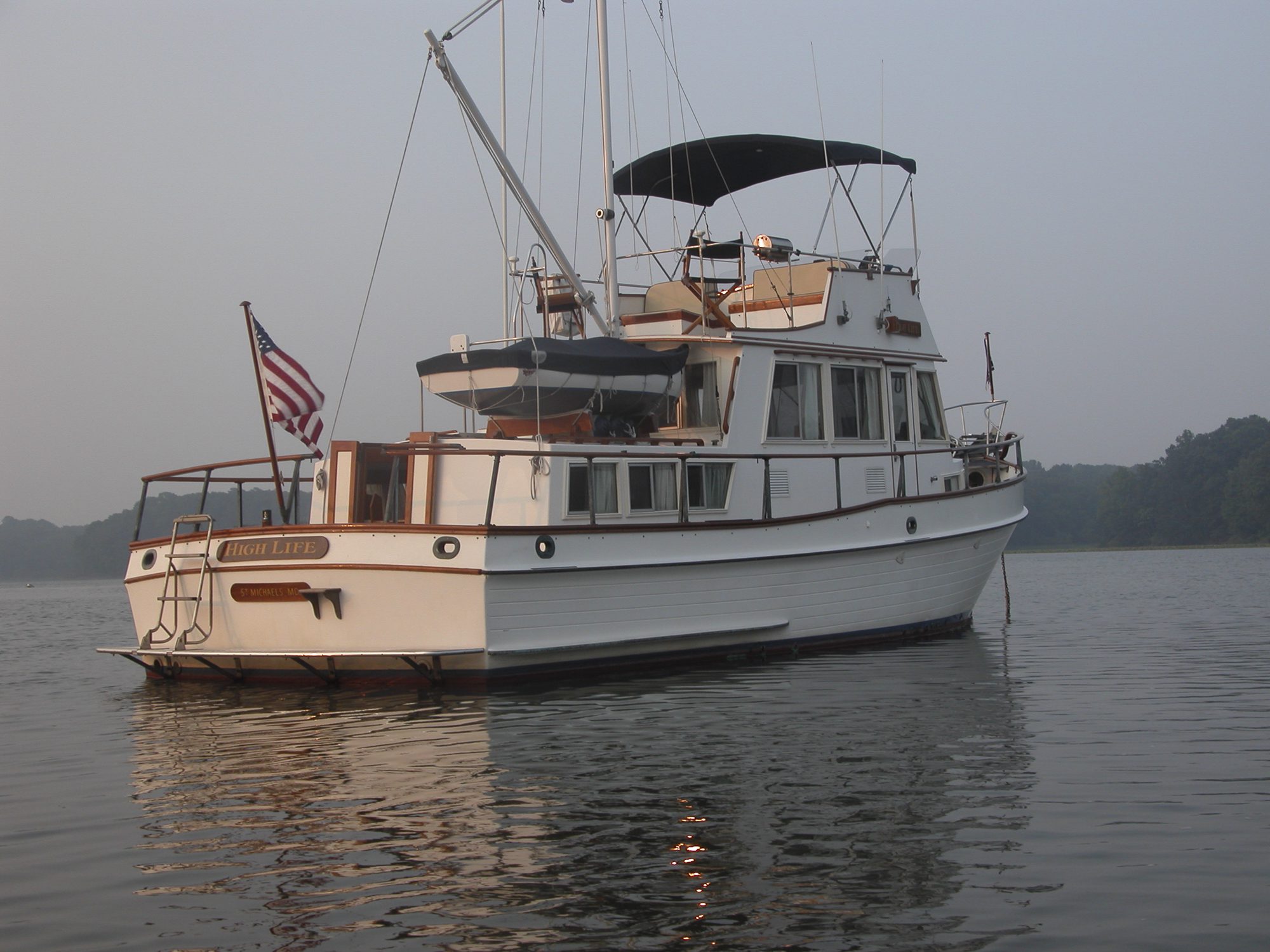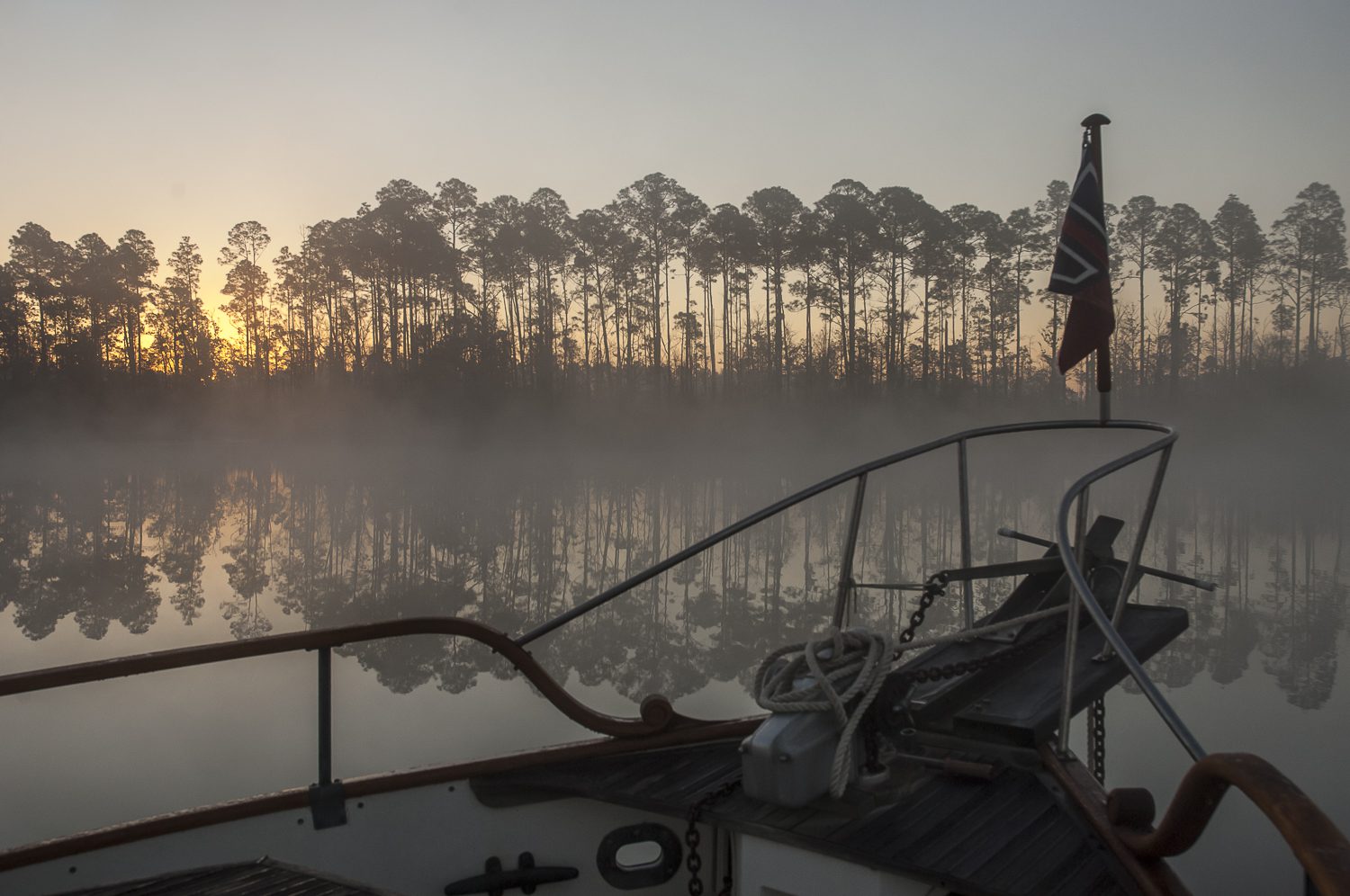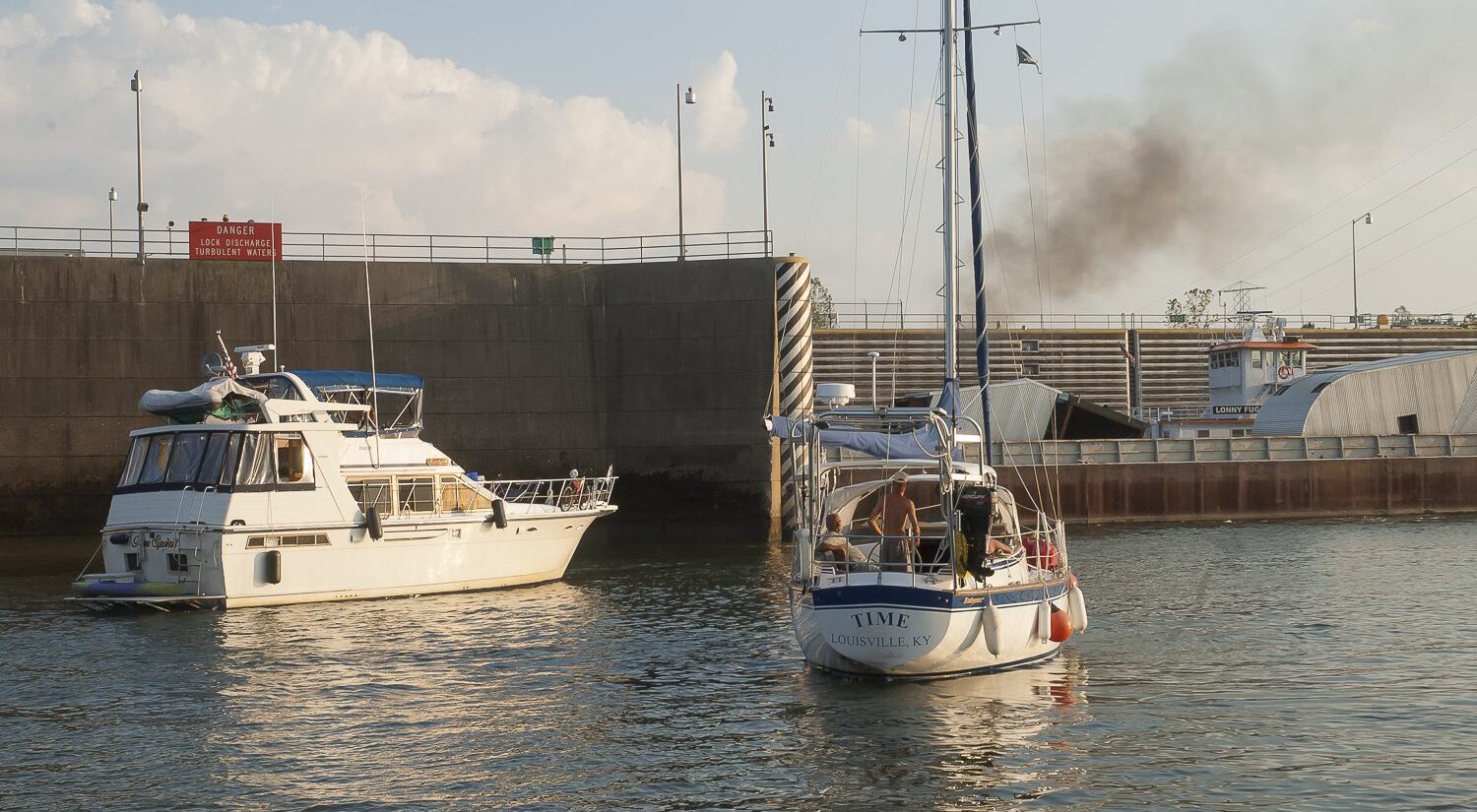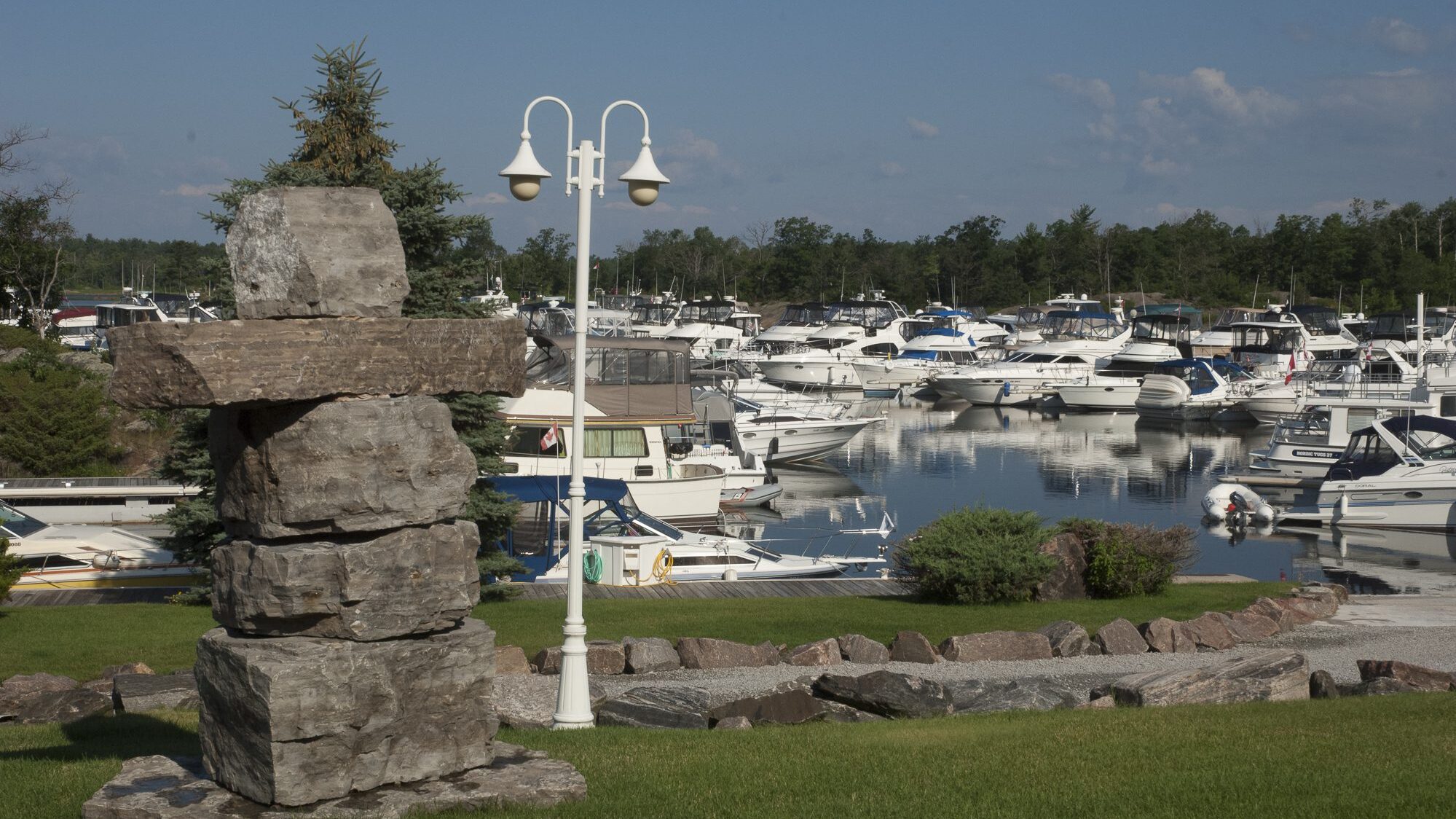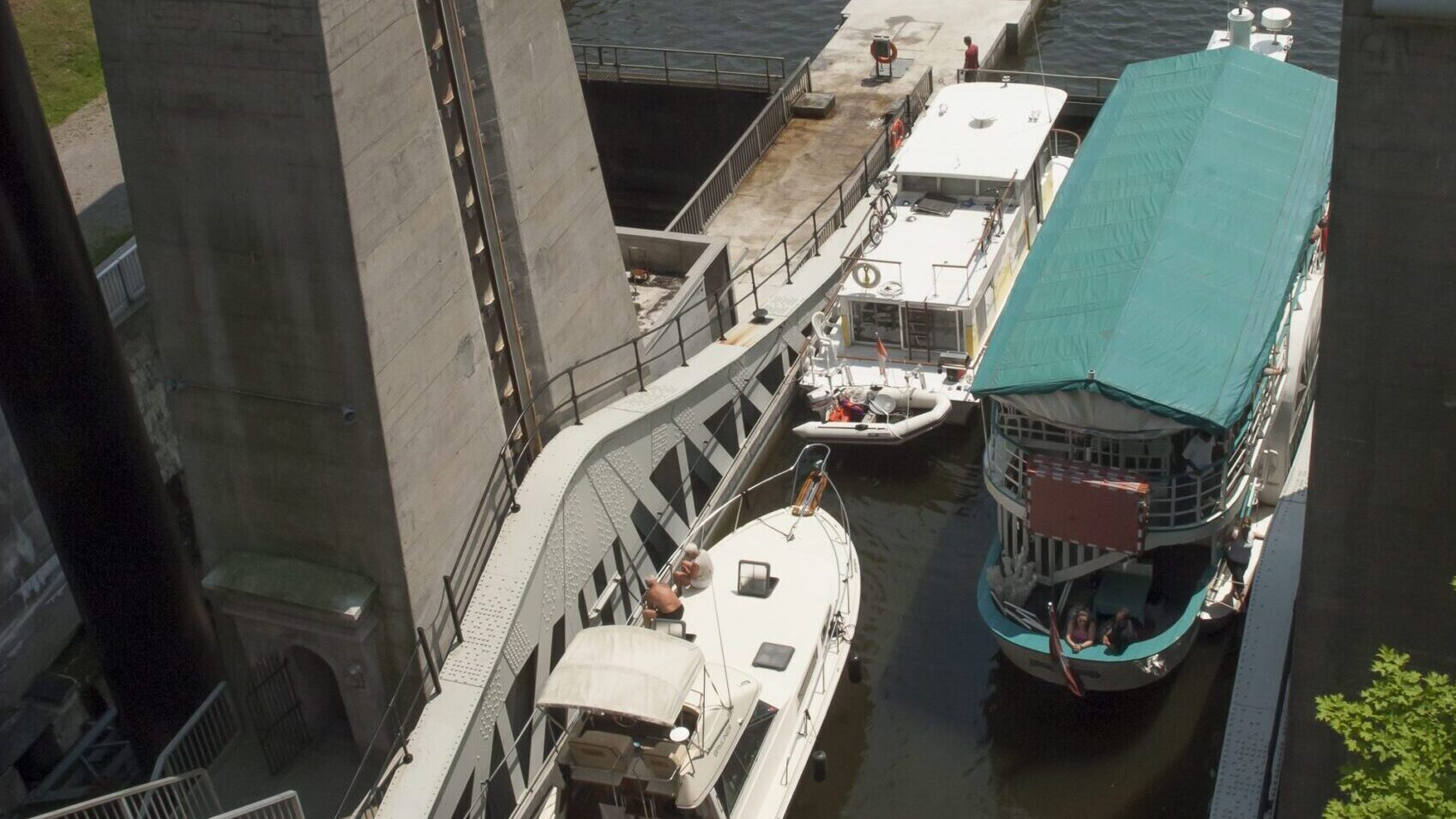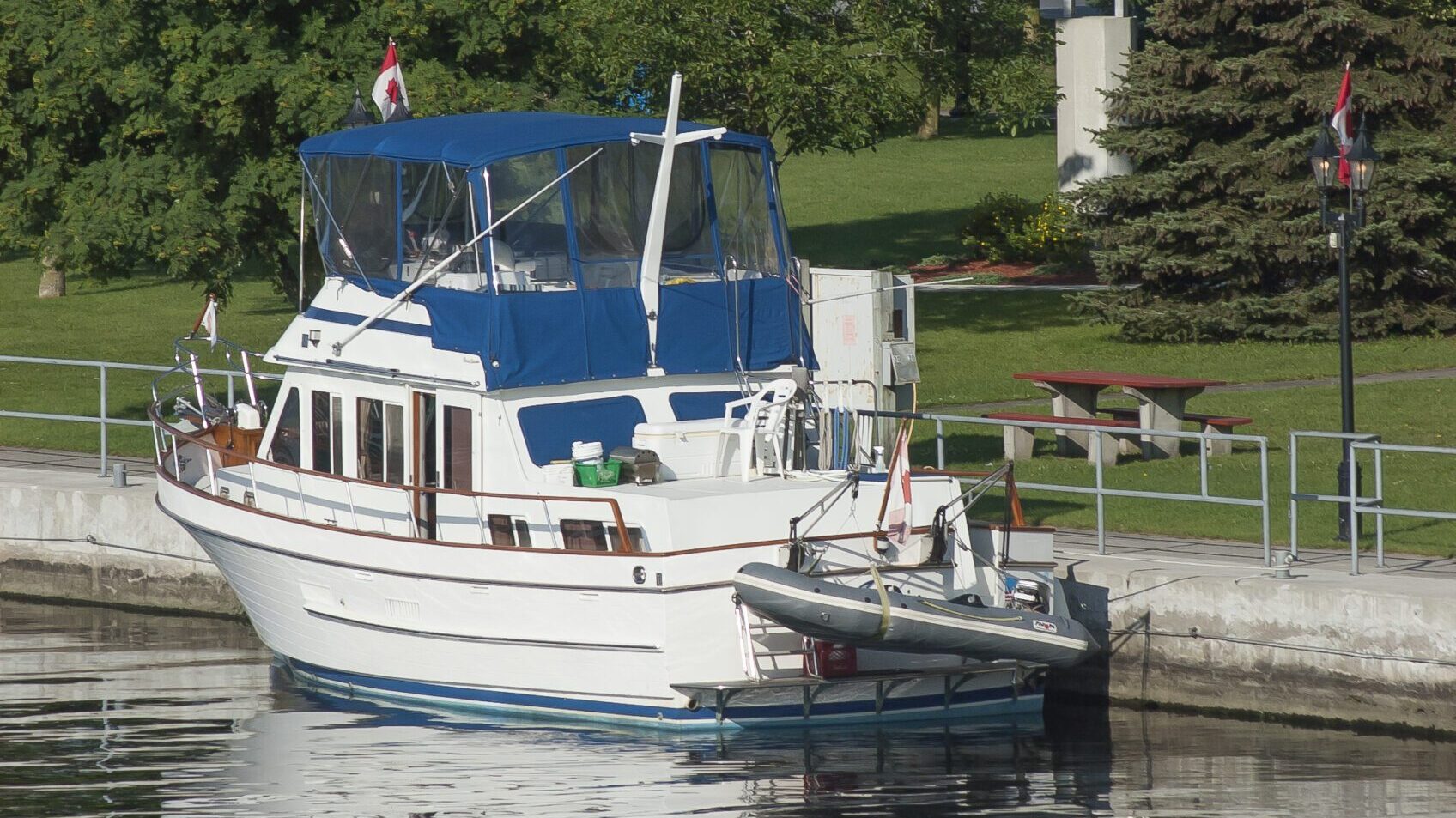Boating the best of Lake Michigan from Harbor Springs, Charlevoix, Leeland, Frankfort and White Lake to Chicago Harbor
With so many adventures alreaddy under our keel, we found it easy to believe that we had logged so many mile—all the way from Chesapeake Bay, up the Jersey shore to the Hudson River, across the Erie Canal and Canadian waterways, and northern Lake Huron. We were happy to be boating on Lake Michigan cruising from Mackinaw City to Chicago.
A passage under the spectacular Mackinac Bridge signaled our return to familiar waters we had enjoyed for so many years cruising and racing out of Chicago. An easy run down the rocky, tree-lined coast brought us to Little Traverse Bay and the picturesque town of Harbor Springs. Passing by the colorful lighthouse at Harbor Point and turning north to enter the harbor, we were struck by the brilliant turquoise water, which was as clear as we found in the Bahamas. The bottom was visible at a depth of fifteen feet as High Life passed over sandy spots and patches of grass while approaching the dock.
Revisiting favorite harbor towns
Harbor Springs
The town’s harbor was lined with charming, white-painted houses and dotted with small sailboats dodging in and out of the moored boats. Kayaks and canoes quietly paddled to their own tune. We tied on the transient t-head at the Irish Boat Shop, which is clearly a sailors’ meca. The place was bustling with everything from the children’s harpoon fleet to a visiting crew of the U.S. Olympic sailors. Our neighbors in the adjoining slips were fishermen either headed out or coming in, and families with kids were diving and swimming off the docks.
The plan was to have our friends Jayne and Irv join us for a week’s cruise. We called them on a Monday and said we’d be in Harbor Springs the following Friday. Over the years, we’ve learned that having flexible friends is the best approach to avoiding the pitfalls of long-range cruising plans. Some Loopers we know were forced to travel in bad weather because they had to pick up crew at a prearranged rendezvous, a sure way to create stress. We think it’s better to be as spontaneous as possible, unconstrained by a timetable.
Since we were all former sailors from Chicago, the four of us were anxious to revisit our favorite areas on the lake, with the hope that things hadn’t changed too much from what we remembered. Harbor Springs didn’t disappoint us; the town had aged gracefully or hardly at all.
We perused the upscale shops—clothing, home furnishings, antiques and artwork—that paralleled the shore on Main Street, and there were more stores on the side streets running down to the harbor. We ate our way through town, particularly enjoying breakfast at Turkeys and dinner at the New York Restaurant that overlooked the municipal harbor and old railroad station.
There we were joined by local friends from our long-ago school days, and we had the good fortune to land in the wine cellar, a cozy private room paneled in wooden wine bottle crates. It was a delightful setting in which to enjoy fine dining and good conversation.
Charlevoix
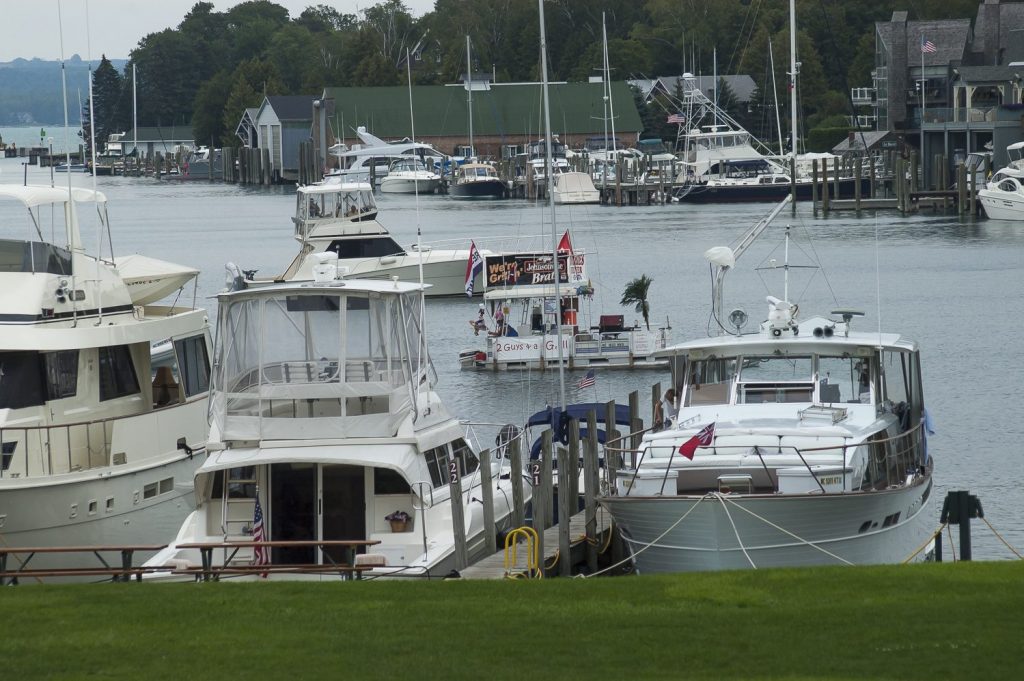
A change of weather was predicted, so we reluctantly said goodbye to Harbor Springs and pushed south to Charlevoix, a short seventeen-mile run. The ferry from Beaver Island was a speck on the horizon as we approached the entrance channel to Round Lake, so we slowed down to time our arrival to pass through the Highway 31 bridge with the larger vessel. That proved to be a mistake, as we soon realized the faster ferry had no problem outdistancing our pokey trawler, and we were soon left in its wake. So we idled in the channel, waiting for the next opening and watched the sunbathers on the nearby white sandy beach. As the bridge opened and we made our way through the narrow opening into the confines of Round Lake, fishermen cast their lines from both sides of the breakwater and tourists strolled the banks.
The harbor was bustling with enterprise, including a floating deli that lured boaters with the promise of grilled brats and cold smoothies. The extensive collection of cruisers who had dropped the hook or tied up shoreside confirmed that Charlevoix was the place to be on that summer weekend. We learned that most of the state-funded marinas in Michigan don’t take reservations; they prefer you to be in the harbor when you radio for a space assignment, so we called and were happy to get a slip at the town dock.
The marina borders Bridge Street, the main drag through town, making it convenient for shopping, provisioning and strolling to eateries offering every level of cuisine. While the shops offered a nice selection of clothing and furnishings, we were most impressed by some of the artwork at Zazen Gallery, particularly the amazing glass-rod pieces. The artwork and antiques at the North Sea Gallery also caught our eye.
On Sunday we awoke to the sound of church bells and a strong wind whistling through the halyards of nearby sailboats, and we voted to stay put. After popping for a Sunday New York Times at a pricey seven dollars, we went out for breakfast. It was a lazy day, but we managed to get energized in time for an afternoon dinghy ride and poked our noses inland into the much larger Lake Charlevoix.
Northport was next on our list of return visits. There we met some of the Ann Arbor and Detroit folks who keep their boats in this idyllic spot on northern Grand Traverse Bay. They confided that the waiting list for a boat slip is years long but worth it. We did our best to support the local merchants, finding fresh bread at Barb’s Bakery and some Petoskey Stones at the Nature Gems Rock and Bead Shop.
Onward to Leland
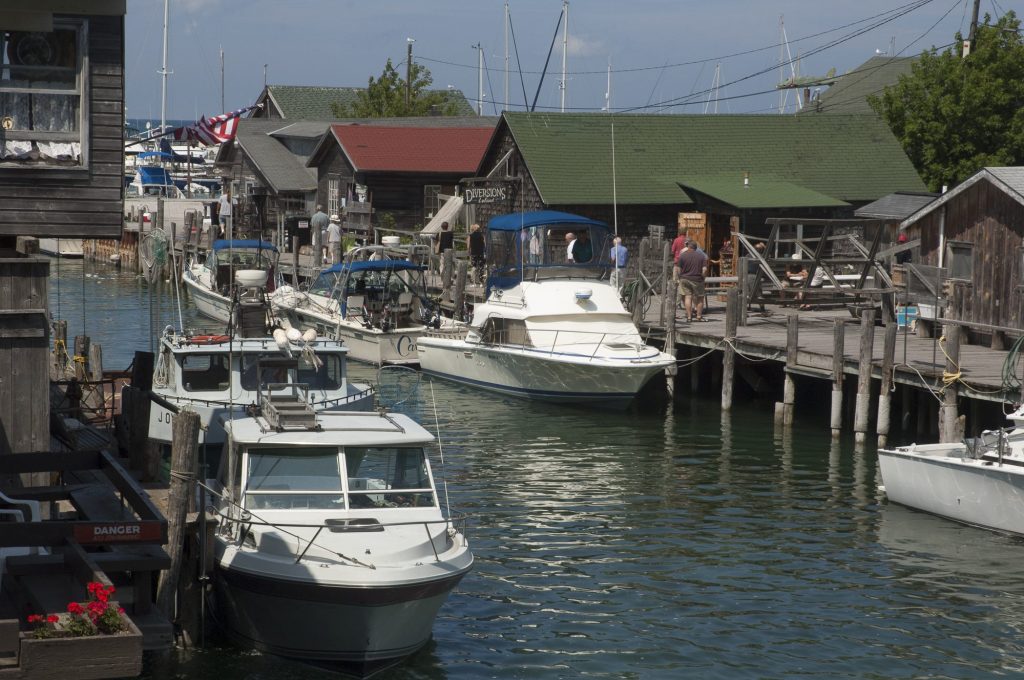
Leaving Northport and the northern Leelanau peninsula, we rounded the Grand Traverse Bay Lighthouse, heading south on the lake to Leland. We teased Jayne that she should be a Realtor in Leland because she’s such a fan of the charming old harbor town.
We enjoyed walking through Historic Fishtown, a collection of fishing shanties that was restored in the 1970s and converted to specialty shops, all fronting the river. The new businesses seem to follow the not-so-big philosophy, and they blended nicely into the original structures and the surrounding landscape. With its fine art galleries, good restaurants, and shopping opportunities, all within a block of our boat slip, Leland was queuing up as our favorite port of call.
Fellow Loopers getting together
Aboard High Life, we always fly the Looper burgee and after noticing several similar flags when we reached Leland, we decided to host a get-together for our fellow Loopers and learned a lot about their strategies.
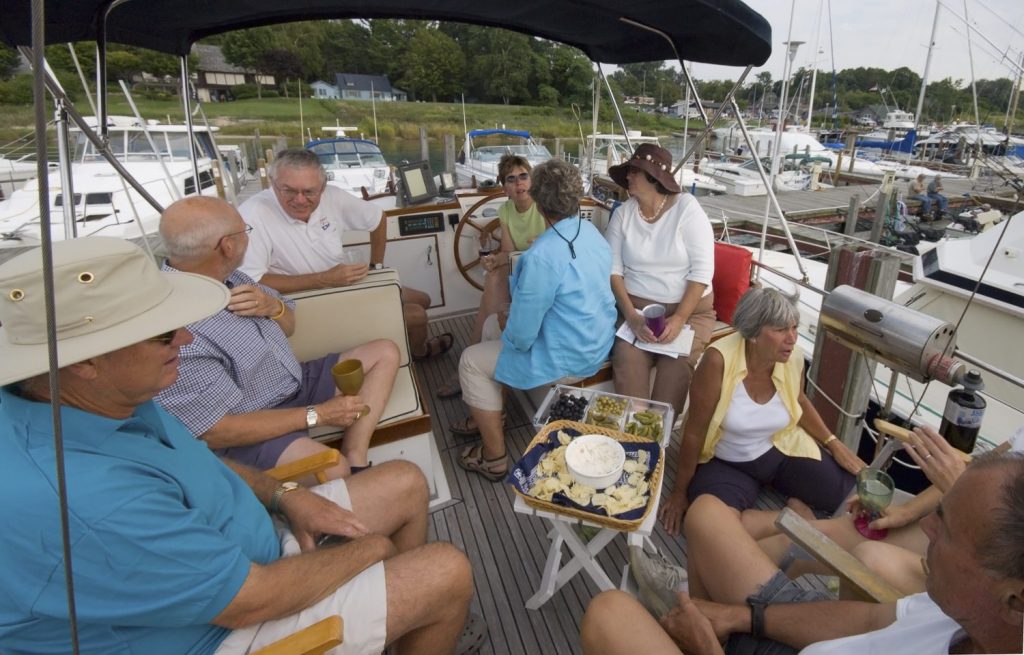
Two Wisconsin couples sharing a single boat were headed for Green Bay to complete their year-long adventure, while others from the Kentucky Lakes and Florida would be home in October. A couple from Texas who had left their boat in northern Michigan the previous fall were spending the summer cruising the lake. They figured it would take them several years to complete the Loop.
We knew other cruisers from the West Coast who were using the same plan, leaving their boats for the winter and returning to enjoy a summer underway. In short, a variety of people were making the six-thousand-mile-long journey in many ways, and all of them seemed to be enjoying it.
It was fun to catch up on news of other Loopers and to share the good and bad days. Many had experienced unexpected delays for repair work (mostly engine troubles and bent props); others were perplexed that they hadn’t allowed enough time to see it all. Most of us had loved the Trent-Severn but were happy to have left all the locks behind. We were in awe of the emerald waters of Lake Michigan but were sobered by them when strong winds blew.
Sometimes we found ourselves defending the lake when other Loopers characterized it as rough and unforgiving. Yes, we said, but you must realize that a fifteen-knot breeze on an inland waterway produces merely choppy conditions, but on Lake Michigan—with hundreds of miles of fetch—you can expect two- to three-foot waves. We knew from our previous trips to the region that the prevailing summer winds blow from the west or southwest. Since most Loopers cruise the east side of Lake Michigan, they face waves that have the full width of this inland sea to build up. Listen to the local forecasts, we suggested, and pay attention to what’s happening in the center of the lake.
Soon after the get-together, it was time for our crew, Jayne and Irv to leave the boat; Irv got a ride back to Harbor Springs to retrieve their car by cleverly negotiating a ride with a dock hand. We then had a lovely farewell dinner at the Bluebird Restaurant, a venerable institution of fine dining. The next day, we loaded their gear from the boat to the car and said our good-byes.
TIP Our firsthand experience using binoculars on a boat: Binoculars are vulnerable on a boat. An unexpected roll from a passing boat wake can send binocs onto a hard deck surface or worse, bouncing off the boat. To protect binoculars, stow them near the helm so they’re readily available but tucked in a safe cubby that prevents them from being damaged.
Passing Sleeping Bear Dunes National Seashore
High Life pushed on to Frankfort, passing miles of the Sleeping Bear Dunes National Shoreline, where immense sand dunes perched atop towering headlands for as far as we could see. Lake Michigan was moody blue and a wonderful place to be in warm sunshine; on such days we pinched ourselves, marveling at our good fortune to be cruising.
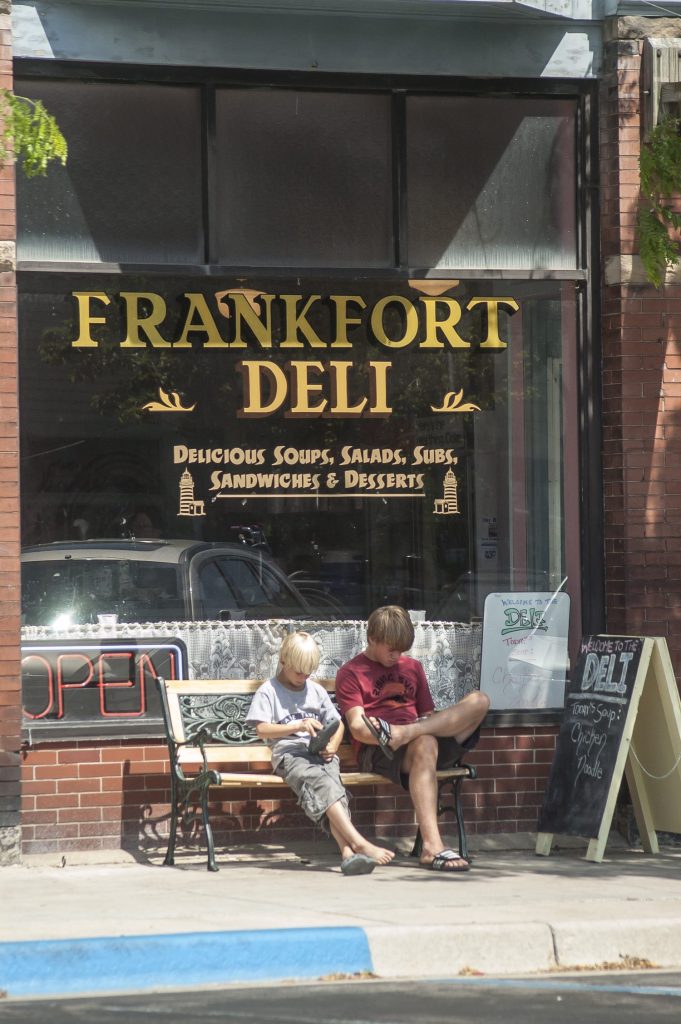
The state of Michigan has many smaller lakes that feed into the huge body of water which bears its name, and Betsie Lake at Frankfort is one of them. There we dropped anchor across from a coal tipple, a cone-shaped storage bin that served the trains used in the days when car ferries connected Frankfort with Elberta.
The launch ramp was busy with a weekend fishing tournament, a steady stream of beachcombers wound its way to the lake, and droves of shoppers perused the window storefronts. Fortunately, Frankfort hosts stores that sell what we consider to be the essentials of cruising: ice cream, hardware, and books. We also liked the Frankfort Deli and the Crescent Bakery, a popular spot because of its Wi-Fi connection and breakfast paninis.
We walked on the section of the Betsie Valley Trail that runs along the waterfront, and at dusk we joined the crowd of sunset watchers on the beach. It was intriguing to learn that soaring is a popular sport in this town, but we decided to stick to the water for our thrills.
Pentwater
Later in the week, Gene laid in a course for Pentwater, some sixty-five miles to the south. The day started out with a light southwest breeze, but it quickly built to twenty miles an hour and the seas grew to three and four feet. The weather was so cool we were steering from the lower helm.
Suddenly, we looked at one another and asked, “What was that?” Occasionally, as the boat rolled, we heard a heavy clunking sound that seemed to originate in the engine room directly below us. It wasn’t constant, but we decided to stop short at Manistee, another river town just off the lake.
After the diesel cooled down, Gene checked the entire engine room for anything loose that might have created the noise. Nothing was out of place, but if he braced himself against the hull and pushed hard on the engine, it moved a bit. Our faithful Grand Banks 36 had more than nine thousand hours on its Ford Lehman engine, but she ran like a top. Clearly, however, a bit of professional attention was now in order.
Before things got any worse, we called Eldean, a well-known shipyard on Lake Macatawa, and made an appointment to have the engine mounts replaced and some additional preventive maintenance work done when we reached Holland. In the end, it was lucky that the weather had turned cold and had forced us off the flying bridge; otherwise, we wouldn’t have been alerted to the problem.
Another Loopers meet-up
From our slip at the Manistee town marina, we heard a familiar voice hailing us on the VHF; it was Inevitable Too coming up the river. We hadn’t seen fellow Loopers Bruce and Jean since entering Canada and promptly joined them for an impromptu dinner when we caught up on their adventures. Meeting old friends reminded us how much we enjoy the spontaneity of the cruising life.
It was still dark the next morning when we awoke to the deep, heavy murmur of a large engine, followed by a long horn blast, then a short one. We sprang out of our bunks to see dark sides of the 635-foot freighter Sam Laud filling the width of the river while it waited for two bridges leading to Manistee Lake to open. In the predawn darkness we saw interior lights turned on aboard neighboring boats, all of us curious to see such an enormous vessel in such a narrow river.
After breakfast, we continued cautiously, despite the engine problem, stopping at Pentwater and then moving to White Lake, where we stayed at the yacht club for a trip down memory lane. The club had always ranked as our favorite because of its lovely setting and friendly people. We were happy to see that it hadn’t changed one bit in the thirty years since we’d been there.
A nostalgic return to White Lake
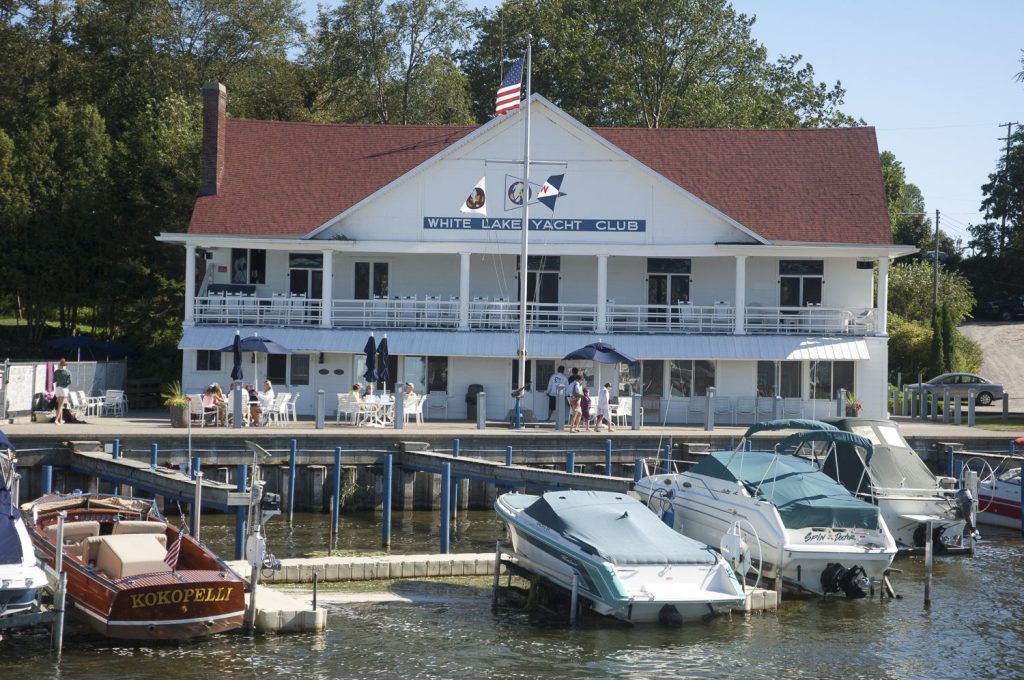
The docks had seen some high water, but the pool and clubhouse were untouched and provided us with a welcome retreat from the rest of the world. The snack bar was just as we remembered it, with knotty pine paneling and names paired within hearts etched into the dark wood tables. We ate Michigan’s own Hudsonville ice cream in cones—for one dollar apiece, no less—and watched local kids launch their fleet of Butterflies (small sailing scows) for a day on the lake.
From inside the T-dock where we had tied, we met a parade of members—three of them Loopers—who strolled by and visited. One stately gent asked us when we had last visited. At our reply that it was back in the late seventies, he said, “That’s when I was the Commodore!” We didn’t know a soul when we arrived, but we quickly felt right at home.
Being hometown tourists in the Windy City
After we reached Holland and while High Life was out of commission at Eldean, we decided to rent a car and take a trip back to Maryland to check on the house. It was good to be home and take care of essentials, but we were soon anxious to get back to the boat and continue to Chicago.
We returned to Holland during the week after Labor Day and with the engine sounding good, we settled with the yard and headed to South Haven, another idyllic Lake Michigan harbor town. From there Gene plotted a direct course to Chicago, about seventy-five miles away, mapping a possible stop at St. Joe’s, which would give us a bail-out point if the weather changed for the worse.
As we approached St. Joe’s from the north, the lake was like a millpond, with only a few sloppy, leftover swells, so we turned southwest and headed for the Windy City. By late afternoon the tops of the John Hancock and Sears Towers were peeking out of the haze, and it wasn’t long before we were passing the Chicago Harbor Light and entering Monroe Harbor.
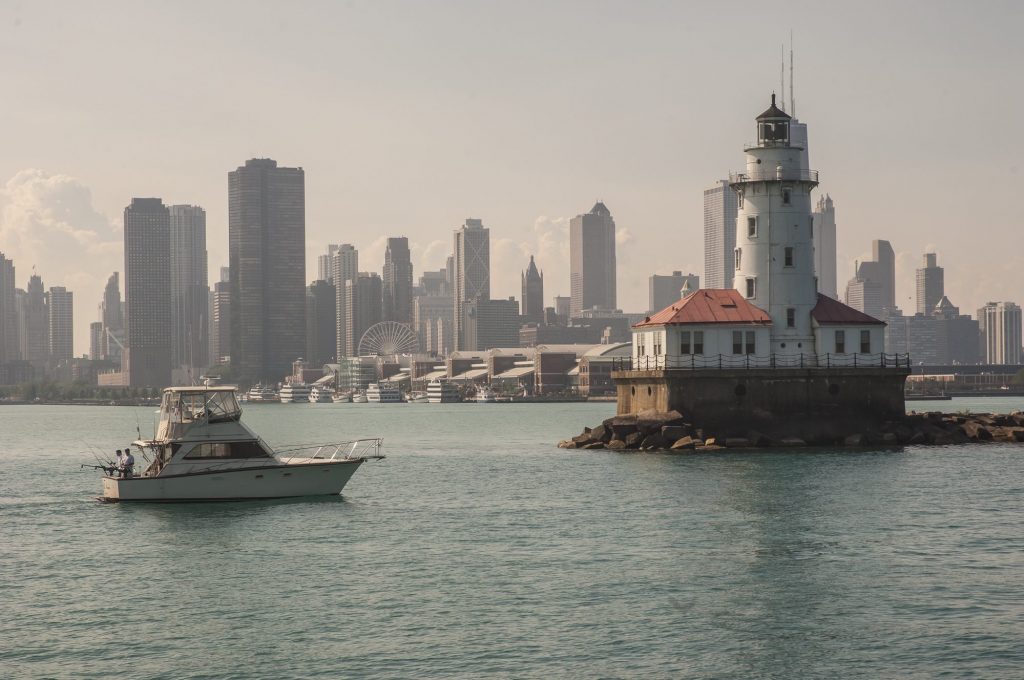
If there is such a thing as déjà vu, we experienced it there. We had kept our first sailboat on a mooring at this harbor and we always dreaded approaching the breakwater. A gusty wind never failed to build up the seas and the Marlyn, a cruise boat full of gawking tourists, always steamed by as we tried to douse our flailing sails. Here we were, thirty years later, entering our old harbor with the Marlyn right behind us. Welcome home! We got our slip assignment at DuSable Harbor, just north of Monroe, and were glad to have a helpful boater catch our lines as we bucked a gusty twenty-knot wind while maneuvering into a tight slip. This harbor is an ideal location for visiting cruisers because you can walk, bike or hail a cab or Uber to just about anywhere in Chicago.
On the dock we met several Loopers going in all directions. Some were looking for a culture fix and had theater tickets; sports fans were headed to Wrigley Field or Comiskey Park; and many more were bound for the Magnificent Mile to find a spa and to shop till they dropped.
With the Navy Pier to the north and the planetarium and aquarium to the south, we were ready to play tourist in our former hometown. We visited the twenty-four-acre Millennium Park, marveling at its extensive grounds and gardens. We loved Cloud Gate (or “the Bean” as locals call it) which is a 110-ton elliptical sculpture of shiny stainless steel that reflects the city’s skyline and clouds. You can’t help but touch its mirrorlike surface and see your image reflected. The concert stage is a massive stainless-steel frame connected to an overhead trellis of crisscrossing pipes, with lush lawn spreading in all directions.
We walked Michigan Avenue and saw the Crown Fountain, consisting of two fifty-foot glass-block towers at each end of a shallow reflecting pond. The towers project video images of Chicago citizens, making us wonder how often it stops traffic. Later we got a better view of it from a double-decker tour bus, and we stopped at the Field Museum to see Sue, the world’s largest, most complete.
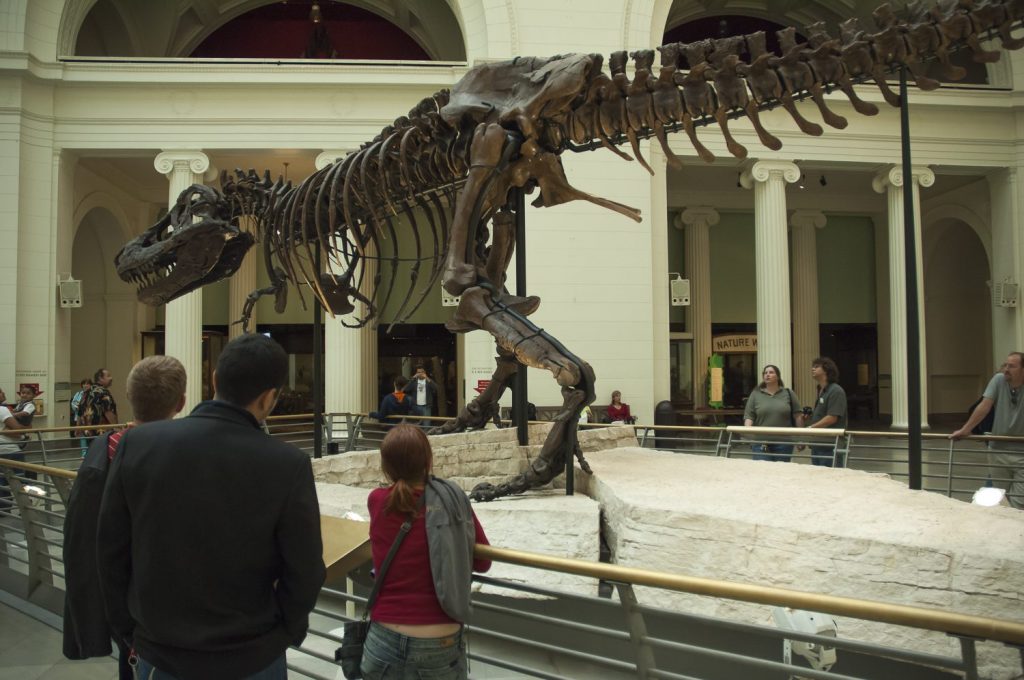
Back on board, we cleaned up the boat, and when the weekend rolled around, we were ready for visitors. We hosted several get-togethers for family and friends who live in the area, and we loved seeing all the little kids climbing around the boat and throwing pretzels to the harbor ducks. The rest of us were happy to sip wine and savor fond memories.
It was a wonderful way to end another segment of our adventure. Since revisiting Lake Michigan was our prime motivation in making the Loop cruise, we felt most fortunate to be there.
Even though we’re born and bred Chicagoans we found useful and up-to-date visitor information about our home town at Visit Chicago.
- Boating on Lake Huron
- Boating the Inland Rivers Chicago to Mobile
- Boating the Panhandle and Gulf Coast from Mobile AL to Fort Myers FL
- Legs of the Great Loop Cruise
Gene and Katie Hamilton are veteran sail and power boaters and award winning boating writers. They are authors of Coastal Cruising Under Power and Practical Boating Skills. They are members of the Outdoor Writers Association of America.
Post Views: 3,784
|

